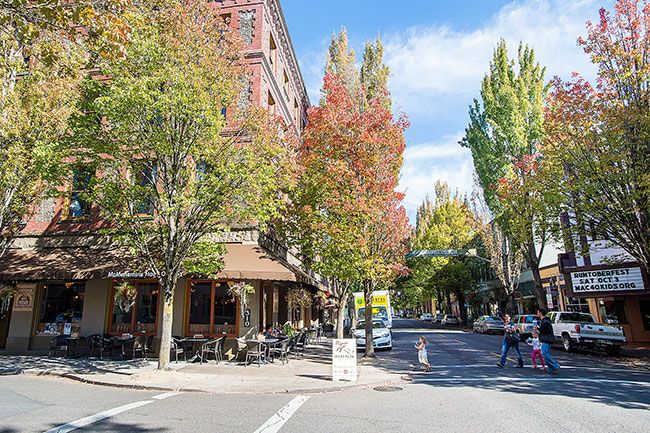Futornick: Streetscaping vital element of downtown Mac rebuild


About the writer: Kathi Futornick is a longtime resident of Yamhill County and frequent visitor to McMinnville. Currently engaged in a climate and environmental risk webinar project, she has more than 30 years of experience in energy, renewables and the environment.
I would like to express my support for McMinnville’s Third Street Improvement Project, and especially its inclusion of trees and shrubs. I live outside the city, but have for many years enjoyed the vibrant downtown.
The project has been in the planning process for several years. Phases A to C have been completed and city planners are now into Phase D.
Phase A established the vision, goals and design principles. Phase B established the initial conceptual design and streetscape, and Phase C refined them. Phase D will produce the schematic and design documents, along with the initial construction documents.
During the past year, letters in the News-Register have voiced concern about the removal, replacement and addition of trees, and more recently, reconstruction of below-grade infrastructure.
As proposed, the streetscape features trees framing the sidewalks, along with development of tree groves. In addition to contributing to Third Street aesthetics, trees help lessen the impact of warmer temperatures, which is leading cities everywhere to add them.
In its Sixth Oregon Climate Assessment, the Oregon Department of Energy projects the frequency of extreme heat events — such as the 2021 heat dome, which claimed 116 lives — increasing from once in 1,000 to 100,000 years to once every six years by the end of the century.
Yamhill County’s temperatures will be increasing in tandem, particularly in its urban areas.
As cities’ unshaded roads, black asphalt surfaces and dark building exteriors gain heat during the day, they radiate that heat into the surrounding air, creating urban heat islands. As a result, urban areas can experience temperatures 15 to 20 degrees warmer than surrounding, vegetated areas.
Phase C of our project calls for trees of types typically used in urban environments, including ones that don’t shed leaves in the fall. If planted and maintained properly, they will not adversely affect sidewalks and infrastructure.
Phase C also calls for replacing asphalt with lighter colored materials like concrete. That attests to the work planners have put in researching the latest in streetscaping.
The urban heat island effect also extends below ground. Here, sustained heat has been shown to impact the durability and performance of infrastructure.
The pipes, pumps and other infrastructure elements serving our downtown are in need of replacement. If Third Street is the heart of the city, the pipes and pumps that keep it humming are its lifeline.
It makes sense to coordinate the above-ground and below-ground improvements to minimize cost and disruption, and the city is seeking state assistance. Adding trees at ground level will help mitigate below-ground temperatures and thus extend the life of the new infrastructure.
More than 20 years ago, the McMinnville Downtown Association undertook a major streetscaping that proved transformational. Third Street became a nationally celebrated example of a downtown done right.
Local planners are building on that this time around. They have melded a people-friendly design with one that looks to the future — not only attract people to downtown McMinnville, but also to provide them with a comfortable environment in which to shop, eat and just linger.









Comments
souders
...a whole phase just for refinement? Whew...exhausting. Lots of catch phrases in this article.
Don Dix
So they 'predict' that the 2021 heat dome will be occurring every 6 years by 2100. The last comparable event happened in Western Oregon 98 years ago (1926, when CO2 wasn't labeled the villain). So where does the once every 1,000 - 100,000 occurrence stat originate?